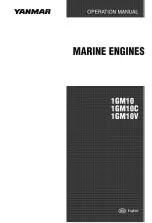
8
Type of Fuel to Use
•
Use clean, fresh, regular unleaded gasoline with a
minimum of 85 octane. Fresh fuel prevents gum from
forming in the fuel system or on essential carburetor
parts. Purchase fuel in quantity that can be used
within 30 days.
•
Do not use gasoline which contains Methanol.
•
Do not mix oil with gasoline.
•
For engine protection use Briggs & Stratton
Gasoline Additive available from your Authorized
Briggs & Stratton Dealer.
•
This engine is certified to operate on gasoline.
Exhaust Emission Control System: EM (Engine
Modifications).
Some fuels, called oxygenated or reformulated
gasoline, are gasoline blended with alcohols or
ethers. Excessive amounts of these blends can
damage the fuel system or cause performance
problems. If any undesirable operating
symptoms occur, use gasoline with a lower
percentage of alcohol or ether.
CAUTION
Adding Fuel
•
Turn engine OFF and let engine
cool at least 2 minutes before
removing gas cap.
•
Fill fuel tank outdoors or in
well-ventilated area.
•
Do not overfill fuel tank. Fill tank to
approximately 1-1/2 inches below
top of neck to allow for fuel
expansion.
•
If fuel spills, wait until it evaporates
before starting engine.
•
Keep gasoline away from sparks,
open flames, pilot lights, heat, and
other ignition sources.
•
Check fuel lines, tank, cap, and
fittings frequently for cracks or
leaks. Replace if necessary.
WARNING
1.
Remove cap. Fill tank to approximately 1-1/2
inches below top of neck to allow for fuel
expansion. Be careful not to overfill.
2.
Replace cap before starting.
Fuel fill location



































